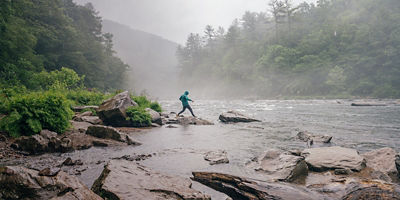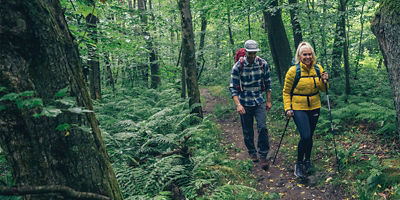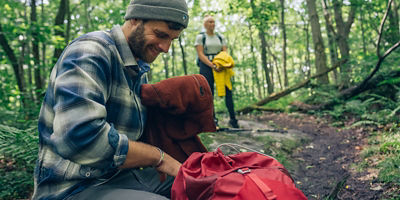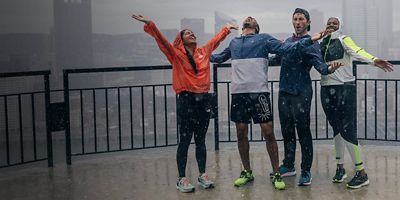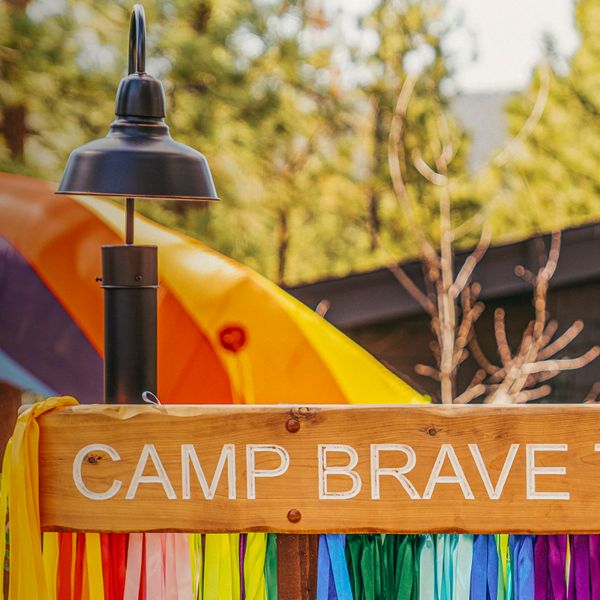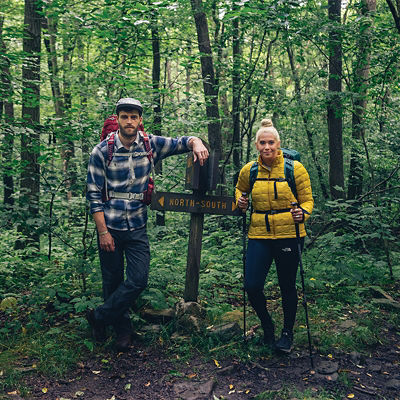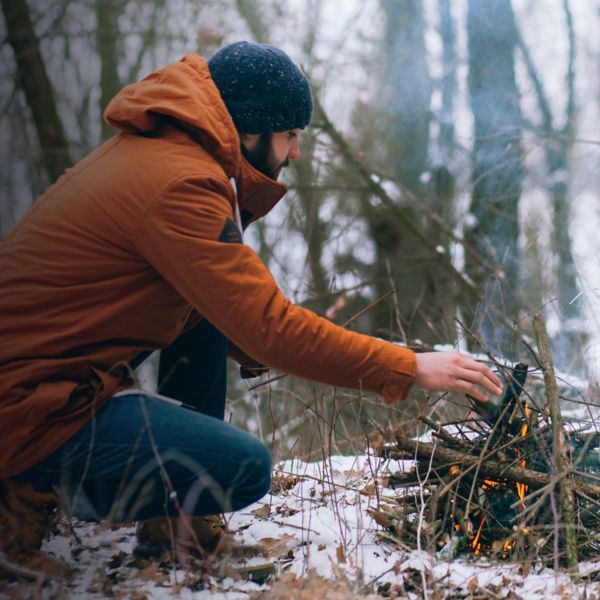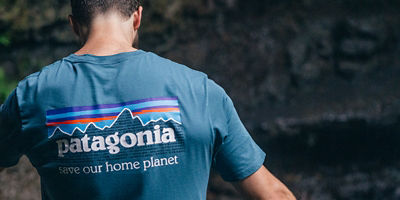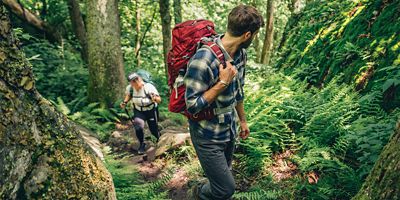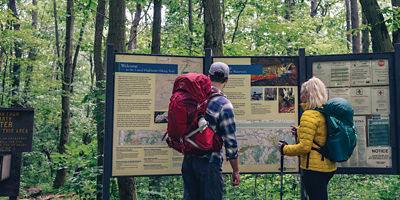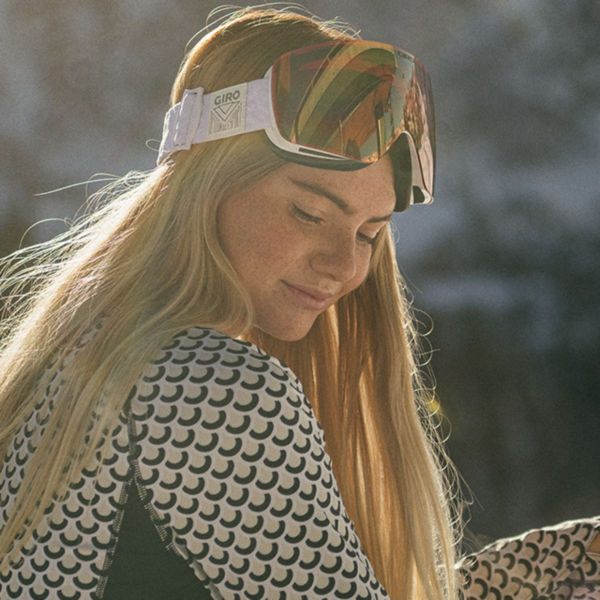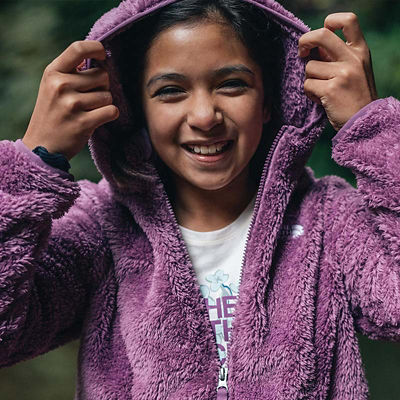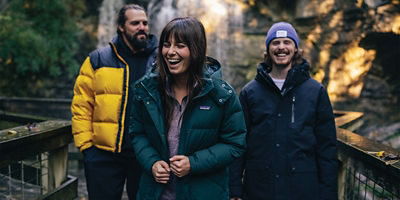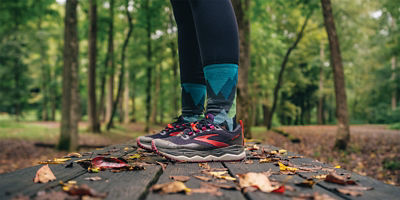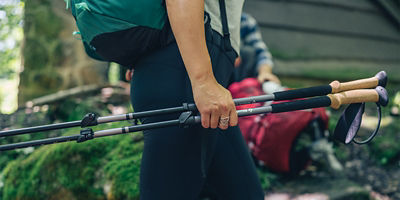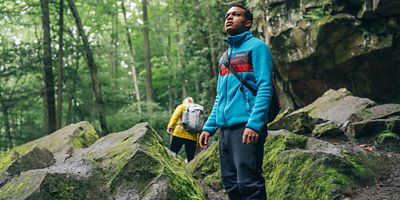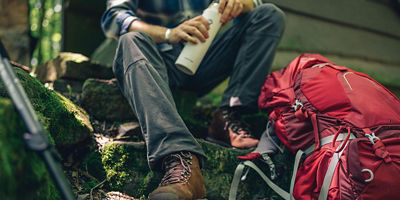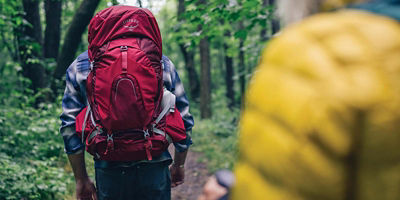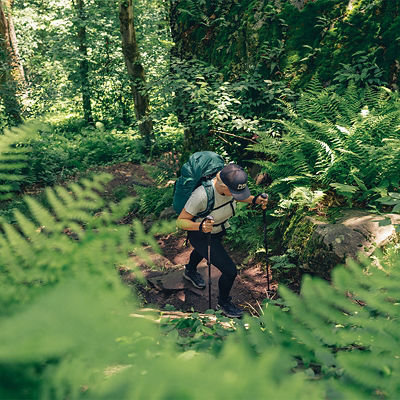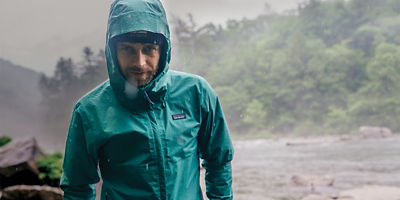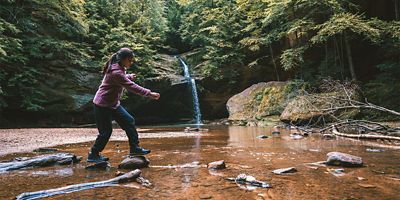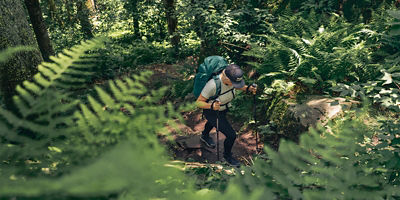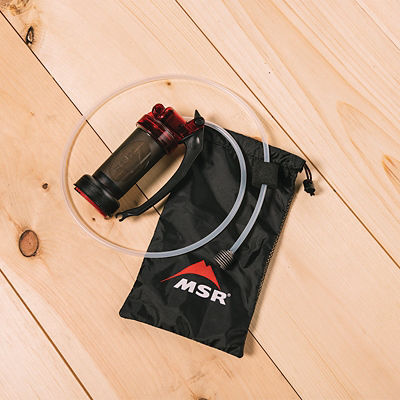
Hiking opens up a world of adventure, whether you’re climbing trails to payoff views atop peaks or simply meandering along a gentle path to soak in natural sights and sounds. It’s an activity that’s open to every age and skill level and one that’s available year-round. Plus, all you really need to step foot on a trail of any sort and start walking is a pair of shoes. But beyond that simplicity, upping your game with the proper gear will increase both your comfort level in all weather, and your safety. And when you’re comfy, covered and secure, you can explore more terrain for longer.
The Basics
Shoes
You’ll want supportive shoes with grippy soles to keep you from slipping on varied terrain. Hiking shoes differ from road running shoes in that they have traction (often made of sticky rubber) as well as support around the foot that includes added protection in the form of toe caps and tougher material overlays. Hiking shoes differ from trail running shoes in they’re more supportive, often stiffer, and more protective. Some prefer hiking in trail running shoes for their lighter weight and added flexibility.
Boots
For longer hikes, especially while wearing a heavy pack (like an overnight backpack full of gear), or for people who want more ankle support than a low-cut shoe can provide, boots work great. Hiking boots have traction for varied terrain, support around the foot and ankle, are often stiffer than shoes to aid support, with a high-cut, padded collar around the ankles (though can take longer to break in).
Pack
For short day-hikes to all-day adventures, wearing a backpack allows you to contain and carry all your essentials. Shop for a lightweight pack that fits you properly. Multiple pockets that are easy to access helps keep gear organized. Most daypacks are designed to be compatible with a hydration bladder, with a portal on one shoulder strap for a hydration hose (and clip to keep it in place).
Hydration bladder/bottle
Hydrating on the trail is a must, though every option for carrying fluids comes with tradeoffs: in a hydration bladder frees up your hands for rocky scrambles or hiking with poles, but puts the weight on your back; in a water bottle shoved in a side-pocket of your pack allows easy refilling at streams (should you have the means to filter water), but can make you feel lopsided. And carrying a bottle—like a Nalgene—in hand makes for easy access to your water, but can feel heavy and awkward.
Sun protection
No matter the time of year, you’ll need protection from the sun. If you’re hiking in heat, consider light and loose next-to-skin layers, particularly those with a UPF rating designed for UV protection. And don’t forget a hat that shields your face, sunglasses, and sunblock that stays on while you sweat.
Next Apparel Priorities
Shorts
Shorts made specifically for hiking are constructed out of durable material that wards off snags or tears. They often have pockets to help stash gear, and should move with you instead of hindering your mobility.
Pants
Like shorts made for hiking, pants made for hiking are durable, allow full mobility, and often have handy pockets. Some pants feature zip-off legs for versatility. Look for materials that are lightweight and quick-drying.
Shirts
The ideal hiking shirts are lightweight, quick-drying, comfortable, and shield you from the sun. They should be void of seams on the shoulder panels so that, when worn under a backpack, the pack’s straps don’t create a rubbing annoyance.
Socks
Wearing socks that extend at least above the ankle bone will help keep out trail debris—tiny rocks, twigs, and dirt that can get between your feet and socks and cause blisters. Socks made for hiking tend to be padded in key areas for long-haul comfort. They should fit well to eliminate bunching and be made of temperature-regulating fabrics like wool, wool/synthetic blends, or synthetic fibers (just avoid all-cotton).
Poles
Trekking poles add two more points of contact on the ground, which creates stability over varied terrain and takes some pressure off your legs by distributing weight. Whether you hike with poles or not will depend on your personal preference, the terrain, and/or the length of your hike.


